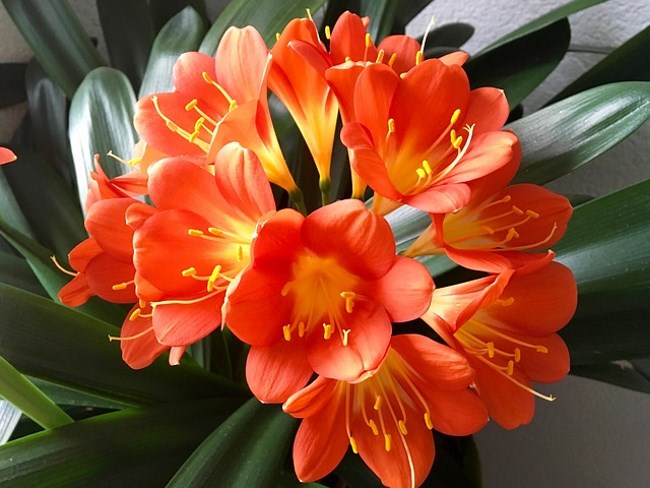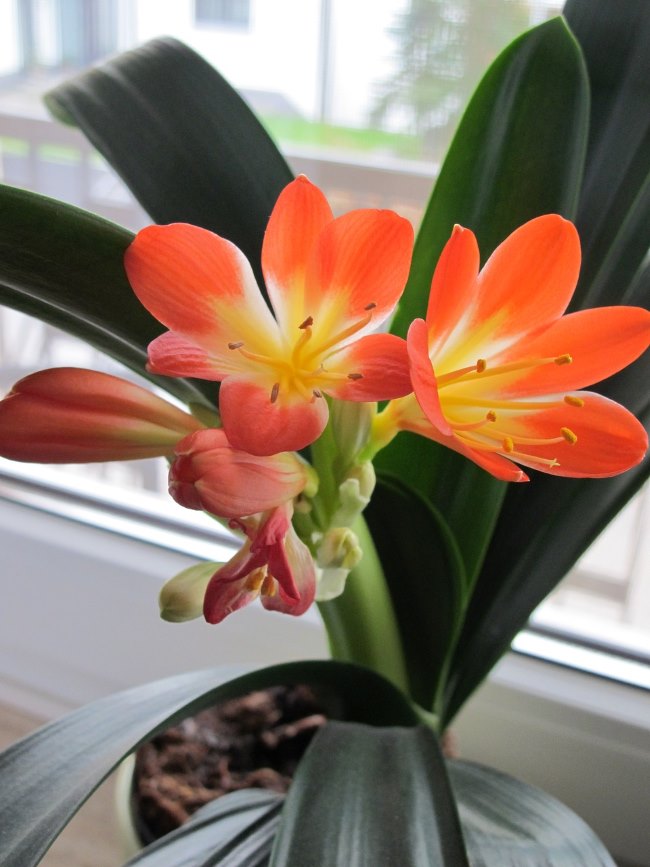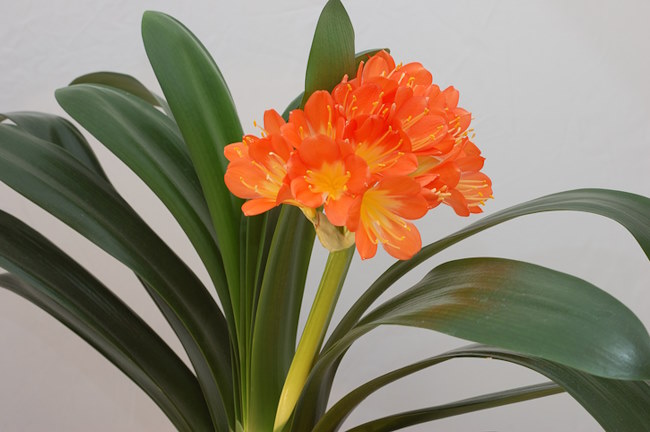How to Grow Clivia Miniata Indoors
A cluster of bright, trumpet-shaped flowers top a fan of glossy foliage, making Clivia miniata a must-have houseplant. This relative of the holiday-favorite Amaryllis blooms in spring and has a charm all its own.
In this guide, you'll find out when to water, how much sunlight it wants, and how to make it bloom year after year.
 Bright orange trumpets are spectacular when they burst into bloom in early spring.
Bright orange trumpets are spectacular when they burst into bloom in early spring.Get to Know Clivia Miniata
Native to the warm, dry forests of South Africa, this long-time favorite houseplant is a member of the amaryllis family (Amaryllidaceae). Clivia miniata is just as easy to grow, and will bloom dependably for you if you can provide a cool rest in late autumn and plenty of bright light in late winter and early spring.
How big does Clivia miniata get? You can expect your houseplant to reach a height up to 24 in (60 cm).
In spring, it bears clusters of 10-15 trumpet-shaped flowers above a thick, upright stem. Bright orange flowers with yellow centers are the most common; however, sometimes you can find rare peach, yellow or white varieties. Rarer still are cultivars with variegated leaves, such as 'Striata'.
Dark-green strappy leaves are 2 in (5 cm) wide and can reach about 24 in (60 cm) long and last year-round. Wipe off the leaves with a damp cloth to keep them dust-free and shiny.
Is Clivia miniata poisonous to cats and dogs? Yes. According to the ASPCA, it contains toxins lycorine and other alkaloids, which may cause severe illness.
How to Make Clivia Bloom
Give Clivia miniata a cool, dry rest for 6-8 weeks beginning in late fall to make it bloom. If you live where winters are cold, you can keep the potted clivia on your porch or patio for a month before the first frost, then bring it back inside and keep it in a cool room until midwinter.
After this rest, the increase of water along with normal room temperatures will bring a spectacular show of blooms in March or April. Show off your blooming clivia on a plant stand for all to admire.
 Bright, indirect sunlight from an East-facing window will help this beauty bloom.
Bright, indirect sunlight from an East-facing window will help this beauty bloom.What to Do After Blooming is Over
Cut off the spent flower head. Wait till the flower stem begins to shrivel before cutting it off at the base of the plant. You can continue to display Clivia miniata -- its glossy fan of leaves will still be attractive all year long.
Don't be too quick to repot. This beautiful bloomer flowers best when it is slightly pot-bound and can stay in the same pot for 3 years or more. Its thick, fleshy roots often appear on the surface of the soil. Just top dress every year by topping with fresh soil as needed.
Plants get bigger and better over the years, so it's a good idea to use a heavy pot to prevent your plant from toppling. Or slip a plain plastic pot into a decorative cachepot to dress it up. Don't worry -- a stylish cachepot won't upstage this magnificent houseplant.
Clivia Problems, Solutions and Special Helps
No blooms? Clivias that fail to flower did not get a cool rest for several weeks in fall. Also, it helps to keep the plant pot-bound. It blooms best when its thick, fleshy roots are a little crowded in the pot. Remember, Clivia miniata plants need to be 3 years old or more before it will bloom. The wait is worth it; this houseplant will flower dependably for you and last for several years.
Something bugging your plant? Fluffy, white mealybugs are sometimes found clustered at the base of the leaves. Treat any infestation immediately.
Keep leaves dust-free. Gently remove dust from the leaves by gently wiping them clean with a soft, damp cloth. Don't use leaf shine products; Clivia leaves are naturally glossy.
 Vivid flowers and a glossy fan of leaves makes Clivia lily eye-catching. Photo istockphoto
Vivid flowers and a glossy fan of leaves makes Clivia lily eye-catching. Photo istockphotoClivia Miniata Care Tips
Light: Bright light, no direct sun. Don't have a window available? Clivia miniata grows beautifully under fluorescent lights.
Water: Keep soil evenly moist in spring and summer. In fall and early winter, water sparingly just to keep plant from drying out completely. Gradually increase watering in midwinter. It's a good idea to use a pot with drainage holes to prevent soggy potting mix.
Humidity: Average room (around 45% relative humidity) or higher. Humidity tends to plummet indoors in the winter, so it's a good idea to use a pebble tray or a cool-mist room humidifier.
Temperature: Winter through summer, average temperatures 65-75°F/18-24°C. Beginning in late fall, a cool rest of 50-55°F/10-13°C is needed for 6-8 weeks for Clivia to re-bloom.
Soil: Good-quality, peat-based potting mix.
Fertilizer: Feed every 2 weeks spring to fall with a high-phosphorous fertilizer. Stop feeding in winter.
Propagation: Division. This plant's thick, fleshy roots are somewhat fragile. Carefully detach offsets with roots from the parent plant immediately after flowering and pot in separate containers. You can expect blooms when Clivia miniata is at least 3 years old.


